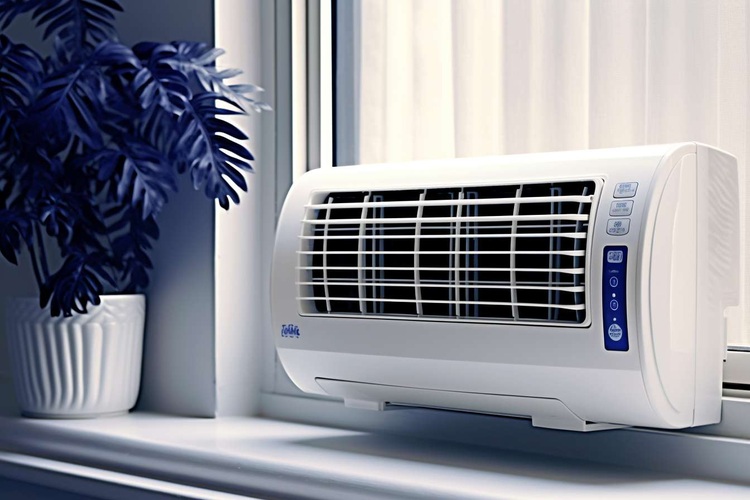Portable Air Conditioners: Your Complete Cooling Guide
Portable air conditioners offer flexible cooling solutions for homes, offices, and spaces where traditional HVAC systems aren't practical. These standalone units provide targeted climate control without permanent installation, making them increasingly popular for renters, homeowners, and businesses seeking efficient temperature management. Understanding how these versatile cooling systems work and which models suit your needs can help you make an informed decision for year-round comfort.

How Does Portable Air Conditioners Work?
Portable air conditioners operate on the same basic refrigeration principles as traditional AC units, but in a compact, moveable design. The process begins when warm air from your room is drawn into the unit through an intake vent. Inside the machine, refrigerant absorbs heat from this air as it passes over evaporator coils, effectively cooling it down.
The cooled air is then blown back into your room through the front of the unit, while the heated refrigerant travels to condenser coils where it releases the absorbed heat. This hot air must be expelled outside through an exhaust hose that connects to a window kit or wall vent. Most units also collect moisture from the air during this process, which either drains automatically or collects in a removable tank that requires periodic emptying.
What Models of Portable Air Conditioners are There?
Several distinct types of portable air conditioners cater to different cooling needs and room configurations. Single-hose units are the most common and affordable option, drawing air from inside the room for both cooling the condenser and circulating back into the space. However, this creates negative pressure that can reduce efficiency.
Dual-hose models address this issue by using one hose to draw outside air for cooling the condenser and another to exhaust hot air, maintaining better pressure balance and improved efficiency. Evaporative coolers work differently, using water evaporation to cool air, making them ideal for dry climates but less effective in humid conditions. Smart portable AC units now include WiFi connectivity, allowing remote control through smartphone apps and integration with home automation systems.
Where Can You Get Portable Air Conditioner?
Portable air conditioners are widely available through multiple retail channels, both online and in physical stores. Major home improvement retailers like Home Depot and Lowe’s stock various models from leading manufacturers, allowing customers to see units in person before purchasing. Electronics stores such as Best Buy offer extensive selections with knowledgeable staff to help compare features and specifications.
Online marketplaces like Amazon, Wayfair, and manufacturer websites provide comprehensive product reviews, detailed specifications, and competitive pricing. Many retailers offer seasonal sales during spring and early summer when demand peaks. Local appliance stores often provide personalized service and may offer delivery and installation assistance, particularly valuable for larger units or customers needing setup guidance.
Key Features to Consider When Shopping
When selecting a portable air conditioner, BTU rating is the primary consideration, as it determines cooling capacity. Rooms up to 300 square feet typically need 8,000-10,000 BTUs, while larger spaces may require 12,000-14,000 BTUs or more. Energy efficiency ratings (EER or CEER) indicate operating costs, with higher numbers representing better efficiency.
Additional features like programmable timers, multiple fan speeds, and dehumidification modes enhance versatility and comfort. Noise levels matter for bedroom or office use, with quieter units typically operating below 50 decibels. Mobility features such as caster wheels and side handles make repositioning easier, while digital displays and remote controls add convenience for daily operation.
Installation and Maintenance Requirements
Most portable air conditioners require minimal installation, typically involving setting up a window kit to accommodate the exhaust hose. The kit usually includes adjustable panels that fit various window sizes and foam insulation to seal gaps. Some units can vent through sliding doors or specially designed wall ports.
Regular maintenance ensures optimal performance and longevity. This includes cleaning or replacing air filters monthly during heavy use, emptying condensate tanks as needed, and keeping intake and exhaust areas clear of obstructions. Annual professional servicing may include refrigerant level checks and internal component cleaning, though many users can perform basic maintenance tasks themselves following manufacturer guidelines.
| Brand/Model | BTU Rating | Price Range | Key Features |
|---|---|---|---|
| Frigidaire FFPA1422T1 | 14,000 BTU | $450-$550 | Dual-hose, remote control, 24-hour timer |
| LG LP1419IVSM | 14,000 BTU | $500-$600 | WiFi enabled, dual inverter, quiet operation |
| Honeywell MN14CEDWW | 14,000 BTU | $400-$500 | Dual-hose, digital display, auto-evaporation |
| Black+Decker BPACT08WT | 8,000 BTU | $250-$350 | Single-hose, compact design, LED display |
Prices, rates, or cost estimates mentioned in this article are based on the latest available information but may change over time. Independent research is advised before making financial decisions.
Benefits and Limitations to Consider
Portable air conditioners offer significant advantages including flexibility to move between rooms, no permanent installation requirements, and suitability for rental properties. They provide immediate cooling relief and can supplement existing HVAC systems in particularly warm areas of a home or office.
However, limitations include generally lower efficiency compared to window units or central air systems, potential noise concerns, and the need for proper ventilation setup. Single-hose models may struggle in extremely hot climates due to pressure imbalances, while all portable units require floor space and access to windows or exterior walls for proper exhaust ventilation.
Understanding these versatile cooling solutions helps you choose the right portable air conditioner for your specific needs, space requirements, and budget. Whether you need temporary cooling, supplemental climate control, or a permanent solution for spaces without traditional HVAC options, portable air conditioners provide practical comfort solutions for various residential and commercial applications.




